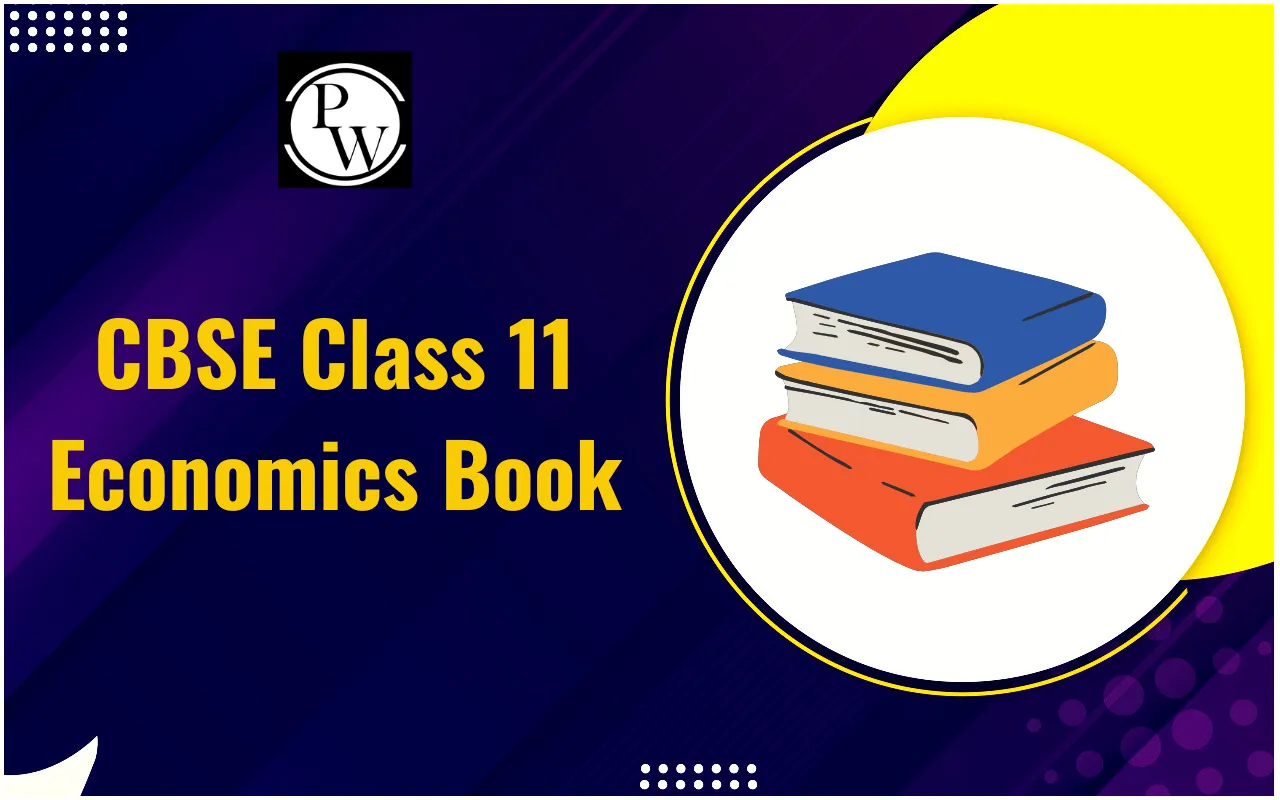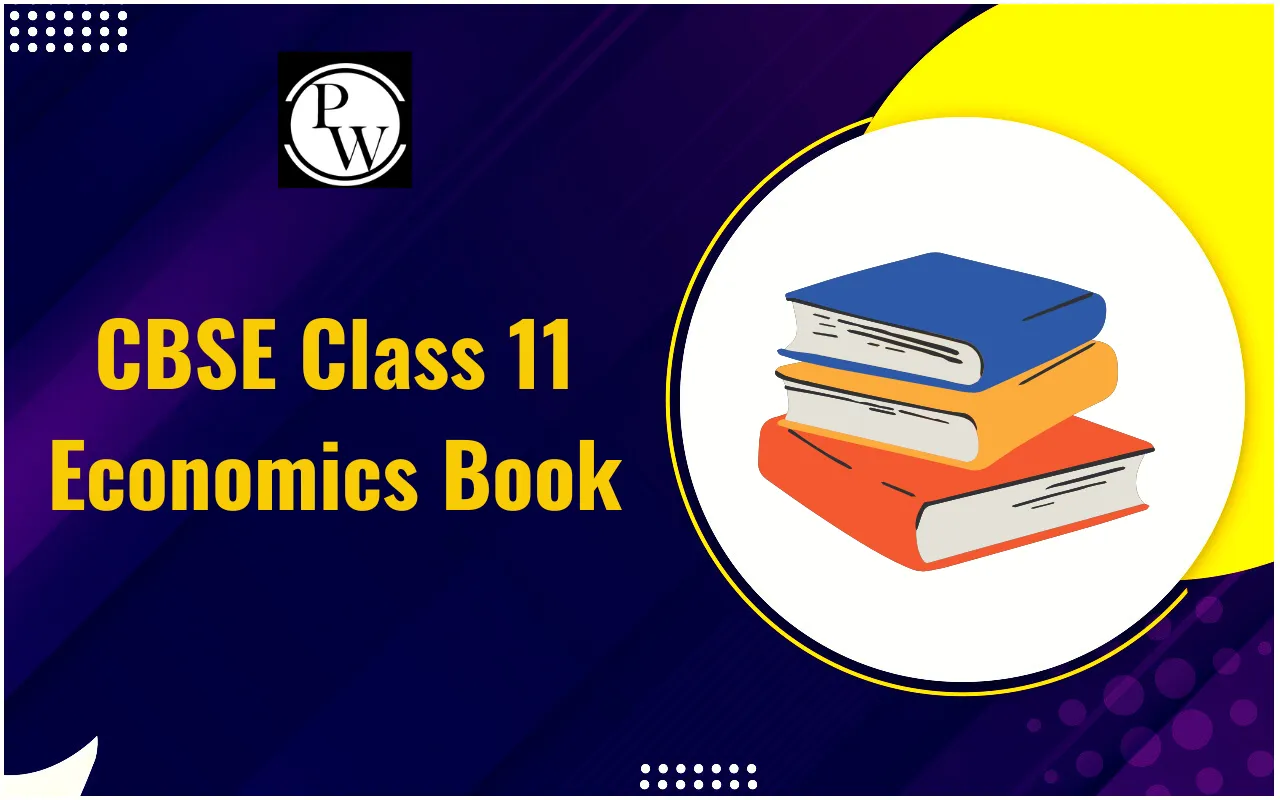

The CBSE Class 11 Economics book introduces students to the fundamentals of economic concepts, processes, and issues. It is divided into two parts: Part A – Statistics for Economics and Part B – Introductory Microeconomics. The Economics book helps students understand how data is collected, presented, and interpreted to study economic problems.
It also explains consumer behaviour, market dynamics, production, costs, and price determination. With real-life examples and exercises given to the students, the book builds analytical and critical thinking skills. By the end of Class 11, students gain a solid foundation in economics, preparing them for further study and practical applications in daily life. Also, this book helps students understand the workings of a nation.
CBSE Class 11 Economics Book Chapters
The CBSE Class 11 Economics book covers important topics that help students build a strong foundation in economics. So that every child can learn about our nation’s economic conditions easily and contribute further in this area. From understanding the Indian economy at independence to knowing more about growth, poverty, rural development, infrastructure, and globalisation, the chapters provide a complete view. Check below for the complete list of chapters that help students through key concepts and real-world applications.
|
CBSE Class 11 Economics Book Chapters |
|
|
Chapter No. |
Chapter Name |
|
Chapter 1 |
Indian Economy on the Eve of Independence |
|
Chapter 2 |
Indian Economy (1950–1990) |
|
Chapter 3 |
Liberalisation, Privatisation and Globalisation – An Appraisal |
|
Chapter 4 |
Poverty |
|
Chapter 5 |
Human Capital Formation in India |
|
Chapter 6 |
Rural Development |
|
Chapter 7 |
Employment: Growth, Informalisation and Other Issues |
|
Chapter 8 |
Infrastructure |
|
Chapter 9 |
Environment and Sustainable Development |
CBSE Class 11 Economics Book PDF
The CBSE Class 11 Economics book PDF is a valuable resource for students beginning their study of economics. In class 11th, it includes two main parts: Indian Economic Development and Statistics for Economics.
The class 11th book explains basic concepts, growth and development issues, and statistical tools in a simple way. Students can easily download the PDF and use it for regular study and exam preparation.
CBSE Class 11 Economics Book Chapters Overview
The CBSE Class 11 Economics book introduces important aspects of India’s economy, covering growth, poverty, rural development, globalisation, and sustainable development. It provides both theoretical and practical knowledge to the students. Check below for the chapter-wise overview to understand each topic better.
Chapter 1: Indian Economy on the Eve of Independence
This chapter highlights the condition of the Indian economy before 1947. The chapter discusses stagnation, backwardness, poverty, and lack of infrastructure under colonial rule. It also discusses demographic trends, foreign trade, and dependence on agriculture.
Chapter 2: Indian Economy (1950–1990)
The chapter focuses on India’s economic policies after independence, including Five-Year Plans, public sector expansion, and the Green Revolution. Explains concepts of planning, self-reliance, modernisation, and challenges like poverty and unemployment. Students learn about mixed economy and state-led growth.
Chapter 3: Liberalisation, Privatisation and Globalisation – An Appraisal
Covers the 1991 economic reforms that opened India’s economy to the world. It explains LPG policies, their impact on industries, trade, and employment. The chapter also evaluates successes and challenges, including the WTO and global integration.
Chapter 4: Poverty
Explains the concept and measurement of poverty, including absolute and relative poverty. Discusses causes, effects, and anti-poverty programs initiated by the government. Students learn about rural-urban poverty differences and policy measures to reduce them.
Chapter 5: Human Capital Formation in India
Highlights the importance of education, health, and skill development in economic growth. Explains how investment in human resources increases productivity and development. Also differentiates between physical and human capital.
Chapter 6: Rural Development
Focuses on agriculture, credit, irrigation, and rural infrastructure. Explains cooperative farming, organic farming, and the role of institutions in rural progress. Topics like rural banking, agricultural marketing, and poverty alleviation are also covered.
Chapter 7: Employment
Growth, Informalisation and Other Issues introduces concepts of employment, unemployment, and workforce participation. Explains types of employment (formal and informal) and their role in the economy. Also discusses issues like jobless growth and underemployment.
Chapter 8: Infrastructure
Highlights the role of infrastructure in economic growth. Covers energy, transport, communication, education, and health sectors. Students learn about infrastructure gaps in India and the government’s initiatives to strengthen them.
Chapter 9: Environment and Sustainable Development
Explains the link between environment and economy. Discusses issues like pollution, resource depletion, and sustainable development practices. This chapter also covers India’s policies and challenges in balancing growth with environmental conservation. So that students can learn more and increase their knowledge in this area.
Benefits of Using the CBSE Class 11 Economics Book
The CBSE Class 11 Economics Book provides complete coverage of all important topics, from statistics to Indian economic development. It uses simple language, affordable access, and free PDF availability to help students score good marks in their class 11th. Check below to explore the important benefits that make this book the best resource for economics class 11 students.
-
Complete Coverage of Economy as per Class 11th– The CBSE Class 11 Economics Book includes all important class 11 economics chapters, such as Statistics for Economics and Indian Economic Development class 11, by ensuring complete conceptual clarity.
-
Simple and Clear Language used in the Book– The economics class 11 CBSE content is written in easy-to-understand language, making it suitable for economics class 11 commerce students to grasp complex concepts.
-
Free PDF Availability of Class 11th Economics Books – Students can conveniently access the Class 11 Economics NCERT PDF online for flexible learning.
-
Foundation for Higher Studies – The book creates a strong base for further economics, helping students in competitive exams and higher education with clear explanations of economics and economy class 11 topics.
-
Affordable and Accessible to all the students– The class 11 economics book price is reasonable, and unlike many class 11 economics reference books, it aligns directly with the CBSE syllabus, helping students in their exams, and at the same time, learning about our nation.
-
Case Studies related to real world – The Indian economy class 11 section links theoretical concepts with practical issues such as poverty, globalization, infrastructure, and sustainable development to help students learn more about the changing world and conditions.
